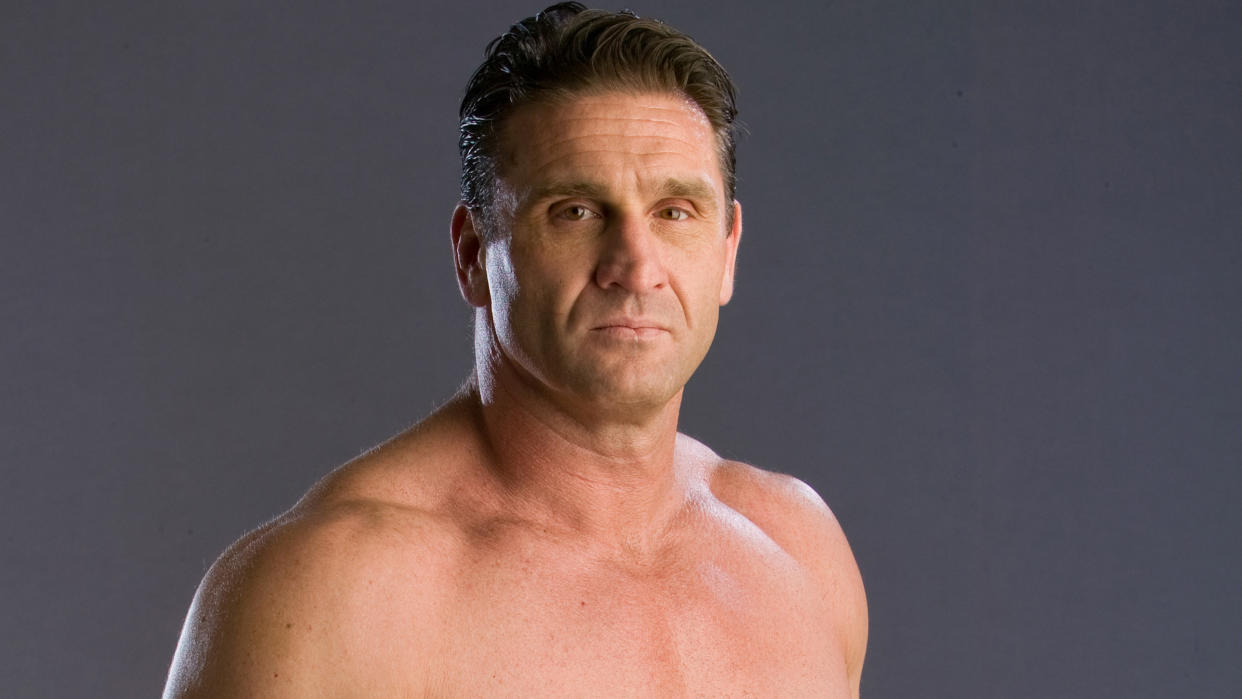'The kind of fighting I fell in love with': Ken Shamrock touts bare-knuckle boxing as next big thing

In November of 1993, Ken Shamrock traveled to Denver, Colorado, to compete in UFC 1. No one knew quite what to expect. There were no judges, weight classes or rounds. The list of rules ran just three deep — no biting, no eye gouging and no shots to the groin.
One combatant, Royce Gracie, who defeated Shamrock in the semifinals of the eight-man tournament, wore his jiujitsu gi. Another, Art Jimmerson, fought wearing a single boxing glove.
Critics called it a freak show and declared it barbaric — “human cock fighting,” Sen. John McCain eventually dubbed it. Plenty of curious fans bought the pay-per-view though and despite the general disorganization of everything, a sport was born. About 24 years later, the UFC was sold for $4 billion.
This week Shamrock, now 55, can’t help but think back to those early days of what he calls “no holds barred” fighting.
He’s launching his own against-all-odds, on-the-fringe-of-acceptable-society combat sports promotion Saturday (9 p.m. ET, PPV) with a card of bare-knuckle fights held in a 20-foot circular “pit” inside a casino in the middle of the Western North Dakota oil patch.
There are plenty of people who think this sport shouldn’t exist — including virtually every sporting commission in America. Only North Dakota, Wyoming and, perhaps, one other state (Shamrock isn’t even sure which one) will dare to sanction bare knuckle fighting. Others consider it just the latest descent into the depths of depravity.
Yet Shamrock sees it all differently — misunderstood, yes, but mostly as the purest, and most desired by fans, form of fighting.
“Mano a mano,” Shamrock said while prepping for the card that will feature 14 fighters. “This is the kind of fighting I fell in love with.”
He recalls watching a fight from early days of no holds barred where gloves weren’t required — as they now are in mixed martial arts and boxing. “My adrenaline went through the roof,” Shamrock said. “I was like, ‘Is this really happening?’ ”
Eventually though, sanctioning bodies required gloves and promoters relented in pursuit of expansion. Shamrock adapted. He fought for years in the UFC and other MMA promotions and was arguably the biggest star in the sport’s early days. He never stopped thinking about bare knuckle though.
“Every fight I’ve been at the crowd chants, ‘Stand them up,’ ” Shamrock said. “This is what they fell in love with too. So I said, ‘I’m going to bring it back.’ ”
He launched Valor Bare Knuckle Inc. and now here comes VBK 1. He knows the doubters are out there, but the events center at the 4 Bears Casino, with a capacity of 4,000 including suites and VIP tables, is expected to be a sellout, or close to it, by Saturday night.
More importantly, every major pay-per-view company, plus the streaming service FITE TV, is offering the card for $29.95. Shamrock has no idea how many people will buy it, but he’s certainly optimistic based on social media interaction.
“The audience is there,” he said. “I know that. I have my finger on the pulse of this.”
He’s probably correct. As for claims that this is too vicious and violent, Shamrock scoffs and says commissions are wrong to prefer gloved hands.
“They aren’t safer,” said Shamrock, who fought bare knuckles in the early MMA days. “If you are wearing a glove you punch harder and more often because you aren’t worried about breaking your hand. As a result, a guy will take 100 shots in a round, that’s 100 times the brain is bouncing off the skull.
“In bare knuckle you have to be more accurate,” he continued. “You have to hit the soft tissue, which is the nose, the cheek bone or the chin, or else you will break your hand. A fighter will actually take less punishment, less blows this way.”
That’s the theory at least. It certainly isn’t for the faint of heart, but then again the faint of heart don’t tend to live in and around New Town, North Dakota.
And this is, of course, the same thing people said about MMA, which is now a central part of ESPN’s programming.
“In the original days of the UFC we had only a few states that would sanction us,” Shamrock said. “But as soon as people began getting educated about it, that changed. I believe the same thing will happen here.”
For Shamrock, this is the latest gamble in a life full of them. He was raised in a troubled home and ran away at age 10, where he promptly got stabbed. He spent much of his youth either in foster and group homes, or living on the streets.
He eventually became a professional wrestler, kickboxer and MMA star, literally fighting for his survival. There’s never been a battle too big, or too small, for him. Just this year he headlined a “no ring bar wrestling” card in Atlanta during Super Bowl week.
He’s a fighter. Always.
Now he thinks this is the start of the next big thing, a full card of bouts including a four-man heavyweight championship tournament (so two fights for the champ and runner-up).
Will it work? Will it last? Will it prove exploitative or transformational?
No one really knows. Shamrock is just basking in the challenge. He’s done fighting, he says. Too old. This is enough.
“Just loving it,” he says.
The question is how many others will love it with him?
More from Yahoo Sports:

